2권 3호

초록
Sanankerto is one of pilot projects for tourism villages in Indonesia due to its natural tourism potential with a 24-ha bamboo forest located in Boon Pring Andeman area. However, the distribution of existing bamboo has never been identified or mapped. Thus, the management is facing difficulty in planning and developing tourism potential as well as spatial management in the area. Therefore, the objectives of this study were to identify and analyze the structure of bamboo vegetation in the Boon Pring Tourism village and to perform vegetation mapping. The type of research was descriptive exploratory with a cluster sampling technique (i.e., a two-stage cluster) covering an area of ± 10 ha. Bamboo vegetation analysis was performed by calculating diversity index (H’), evenness index (E), and Species Richness index (R). Data were collected through observation and interviews with local people and the manager to determine zonation division. Mapping of bamboo vegetation based on zoning was processed into thematic maps using ArcGis 10.3. Micro climatic factors were measured with three replications for each sub-cluster. Data were analyzed descriptively and quantitatively. Nine species of bamboo identified. Diversity, evenness, and species richness indices differed at each location. Activities of local communities, tourists, and manager determined the presence, number, and distribution of bamboo species. These bamboo distribution maps in three zoning (utilization, buffer, and core) can be used by manager for planning and developing natural tourism potential.
Abstract
Sanankerto is one of pilot projects for tourism villages in Indonesia due to its natural tourism potential with a 24-ha bamboo forest located in Boon Pring Andeman area. However, the distribution of existing bamboo has never been identified or mapped. Thus, the management is facing difficulty in planning and developing tourism potential as well as spatial management in the area. Therefore, the objectives of this study were to identify and analyze the structure of bamboo vegetation in the Boon Pring Tourism village and to perform vegetation mapping. The type of research was descriptive exploratory with a cluster sampling technique (i.e., a two-stage cluster) covering an area of ± 10 ha. Bamboo vegetation analysis was performed by calculating diversity index (H’), evenness index (E), and Species Richness index (R). Data were collected through observation and interviews with local people and the manager to determine zonation division. Mapping of bamboo vegetation based on zoning was processed into thematic maps using ArcGis 10.3. Micro climatic factors were measured with three replications for each sub-cluster. Data were analyzed descriptively and quantitatively. Nine species of bamboo identified. Diversity, evenness, and species richness indices differed at each location. Activities of local communities, tourists, and manager determined the presence, number, and distribution of bamboo species. These bamboo distribution maps in three zoning (utilization, buffer, and core) can be used by manager for planning and developing natural tourism potential.

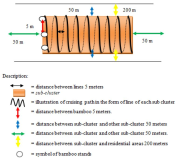










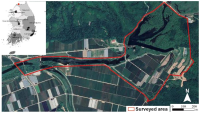
초록
The objective of this study was to provide basic data for the conservation of wetland ecosystems in the Civilian Control Zone and the management of Yongyangbo wetlands in South Korea. Yongyangbo wetlands have been designated as protected areas. A field survey was conducted across five sessions between April 2019 and August of 2019. A total of 248 taxa were identified during the survey, including 72 families, 163 genera, 230 species, 4 subspecies, and 14 varieties. Their life-forms were Th (therophytes) - R5 (non-clonal form) - D4 (clitochores) - e (erect form), with a disturbance index of 33.8%. Three taxa of rare plants were detected: Silene capitata Kom. and Polygonatum stenophyllum Maxim. known to be endangered species, and Aristolochia contorta Bunge, a least-concern species. S. capitata is a legally protected species designated as a Class II endangered species in South Korea. A total of 26 taxa of naturalized plants were observed, with a naturalization index of 10.5%. There was one endemic plant taxon (Salix koriyanagi Kimura ex Goerz). In terms of floristic target species, there was one taxon in class V, one taxon in Class IV, three taxa in Class III, five taxa in Class II, and seven taxa in Class I. Three invasive alien species (Ambrosia trifida L., Ambrosia artemisiifolia L., and Humulus japonicus Siebold & Zucc) were observed. For continuous conservation of Yongyangbo Wetlands, it is necessary to remove invasive alien plants and block the inflow of non-point pollutants.
Abstract
The objective of this study was to provide basic data for the conservation of wetland ecosystems in the Civilian Control Zone and the management of Yongyangbo wetlands in South Korea. Yongyangbo wetlands have been designated as protected areas. A field survey was conducted across five sessions between April 2019 and August of 2019. A total of 248 taxa were identified during the survey, including 72 families, 163 genera, 230 species, 4 subspecies, and 14 varieties. Their life-forms were Th (therophytes) - R5 (non-clonal form) - D4 (clitochores) - e (erect form), with a disturbance index of 33.8%. Three taxa of rare plants were detected: Silene capitata Kom. and Polygonatum stenophyllum Maxim. known to be endangered species, and Aristolochia contorta Bunge, a least-concern species. S. capitata is a legally protected species designated as a Class II endangered species in South Korea. A total of 26 taxa of naturalized plants were observed, with a naturalization index of 10.5%. There was one endemic plant taxon (Salix koriyanagi Kimura ex Goerz). In terms of floristic target species, there was one taxon in class V, one taxon in Class IV, three taxa in Class III, five taxa in Class II, and seven taxa in Class I. Three invasive alien species (Ambrosia trifida L., Ambrosia artemisiifolia L., and Humulus japonicus Siebold & Zucc) were observed. For continuous conservation of Yongyangbo Wetlands, it is necessary to remove invasive alien plants and block the inflow of non-point pollutants.


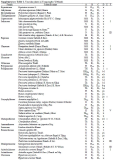
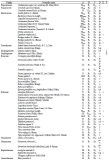
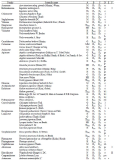
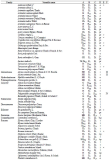

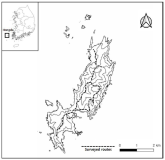
초록
The purpose of this study was to identify the natural habitat of Bulbophyllum inconspicuum Maxim. in Hongdo, Jeonnam Province, South Korea. A field investigation was conducted between May 2019 and May 2021. The growth of B. inconspicuum species was confirmed in three known regions based on National Survey on the Distribution of Endangered Species. Additionally, in the area investigated, 37 new regions harboring B. inconspicuum were detected. The newly observed B. inconspicuum grew naturally on Quercus mongolica, Rhaphiolepis indica var. umbellata, Carpinus turczaninowii, and rocks. Most of them were found on southeast and southwest slopes with altitude above 250 m. As few as 10 up to hundreds of B. inconspicuum were found in clusters. Close to their habitat, Calanthe sieboldii Decne. ex Regel, C. aristulifera Rchb. f. and C. × kibanakirishima Maek. were also found. As Hongdo is an island, multiple endangered species were found together. Thus, once the habitat of a certain plant is discovered, it is very likely that illegal collection of several other species will also occur. Proactive internal and external measures are needed to preserve these species.
Abstract
The purpose of this study was to identify the natural habitat of Bulbophyllum inconspicuum Maxim. in Hongdo, Jeonnam Province, South Korea. A field investigation was conducted between May 2019 and May 2021. The growth of B. inconspicuum species was confirmed in three known regions based on National Survey on the Distribution of Endangered Species. Additionally, in the area investigated, 37 new regions harboring B. inconspicuum were detected. The newly observed B. inconspicuum grew naturally on Quercus mongolica, Rhaphiolepis indica var. umbellata, Carpinus turczaninowii, and rocks. Most of them were found on southeast and southwest slopes with altitude above 250 m. As few as 10 up to hundreds of B. inconspicuum were found in clusters. Close to their habitat, Calanthe sieboldii Decne. ex Regel, C. aristulifera Rchb. f. and C. × kibanakirishima Maek. were also found. As Hongdo is an island, multiple endangered species were found together. Thus, once the habitat of a certain plant is discovered, it is very likely that illegal collection of several other species will also occur. Proactive internal and external measures are needed to preserve these species.

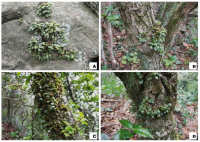
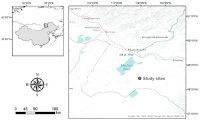
초록
Hulunbuir steppe, one of the four largest steppes in China, has experienced rapidly progressing desertification partly due to overgrazing by livestock. The objective of this study was to investigate the effectiveness of various vegetation recovery methods, including the selection of unpalatable plants less affected by grazing livestock. To determine livestock grazing preferences at Hulunbuir restoration sites, we used DNA barcoding methods to analyze fecal materials of horses and cattle grazing on four restored plants: two trees (Pinus sylvestris L. var. mongolica and Populus canadensis) and two shrubs (Caragana microphylla and Corethrodendron fruticosum). Neither of the two tree species were detected in livestock feces, whereas both shrub species were detected at low frequencies. There were no significant differences in compositions of species consumed by horses and cattle except that Asteraceae species were more often consumed by cattle. Our results showed that the four plants used for restoration may be classified as unpalatable or less palatable species in the Hulunbuir restoration area. Our results may help inform restoration strategies implemented in restoration areas, especially regarding negative effects of livestock grazing during the initial stage of restoration in Hulunbuir.
Abstract
Hulunbuir steppe, one of the four largest steppes in China, has experienced rapidly progressing desertification partly due to overgrazing by livestock. The objective of this study was to investigate the effectiveness of various vegetation recovery methods, including the selection of unpalatable plants less affected by grazing livestock. To determine livestock grazing preferences at Hulunbuir restoration sites, we used DNA barcoding methods to analyze fecal materials of horses and cattle grazing on four restored plants: two trees (Pinus sylvestris L. var. mongolica and Populus canadensis) and two shrubs (Caragana microphylla and Corethrodendron fruticosum). Neither of the two tree species were detected in livestock feces, whereas both shrub species were detected at low frequencies. There were no significant differences in compositions of species consumed by horses and cattle except that Asteraceae species were more often consumed by cattle. Our results showed that the four plants used for restoration may be classified as unpalatable or less palatable species in the Hulunbuir restoration area. Our results may help inform restoration strategies implemented in restoration areas, especially regarding negative effects of livestock grazing during the initial stage of restoration in Hulunbuir.


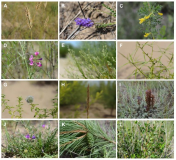

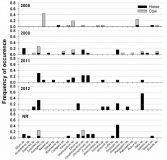




초록
This study was performed to assess Protaetia brevitarsis larva excrement as an organic fertilizer for corn cultivation. Furthermore, the study investigated insect communities in each treatment. In 2009, the corn growth rate was worst in soil treated with P. brevitarsis larva excrement and in 2010, the corn growth rate was worst in untreated soil. From the outcome of the study, P. brevitarsis larva excrement could be utilized as organic fertilizer for corn cultivation.
Abstract
This study was performed to assess Protaetia brevitarsis larva excrement as an organic fertilizer for corn cultivation. Furthermore, the study investigated insect communities in each treatment. In 2009, the corn growth rate was worst in soil treated with P. brevitarsis larva excrement and in 2010, the corn growth rate was worst in untreated soil. From the outcome of the study, P. brevitarsis larva excrement could be utilized as organic fertilizer for corn cultivation.

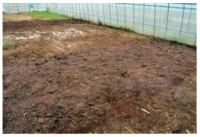






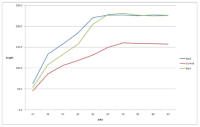













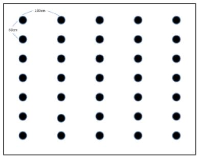
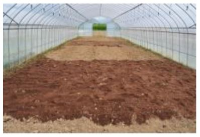

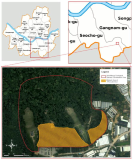
초록
This study aimed to obtain fundamental data for demonstrating biodiversity of vegetation of East Asian alder (Alnus japonica) Forest Wetland of Heonilleung Royal Tombs. A total of 166 vascular plants (159 species, three subspecies, three varieties, and one cultivar) belonging to 132 genera and 59 families were found, accounting for 8.3% of 1,996 vascular plant species found in Seoul. Therophyte was the most common life-form of plants in Heonilleung Wetland. As for rare plant species, one Least Concern (LC) species was found. There were 15 floristic regional indicator species in the research area. Three of them belonged to floristic grades III and IV. This indicates that their habitats are discontinuous and isolated to some degree. Nineteen invasive alien plant species were found, most of which were introduced from North America after the year 1964 with a spread rate of V (widespread, WS).
Abstract
This study aimed to obtain fundamental data for demonstrating biodiversity of vegetation of East Asian alder (Alnus japonica) Forest Wetland of Heonilleung Royal Tombs. A total of 166 vascular plants (159 species, three subspecies, three varieties, and one cultivar) belonging to 132 genera and 59 families were found, accounting for 8.3% of 1,996 vascular plant species found in Seoul. Therophyte was the most common life-form of plants in Heonilleung Wetland. As for rare plant species, one Least Concern (LC) species was found. There were 15 floristic regional indicator species in the research area. Three of them belonged to floristic grades III and IV. This indicates that their habitats are discontinuous and isolated to some degree. Nineteen invasive alien plant species were found, most of which were introduced from North America after the year 1964 with a spread rate of V (widespread, WS).





초록
Xuan Thuy and Con Dao are natural Ramsar sites in Vietnam with different ecosystems, geography and topography. Avian fauna in these two Ramsar sites were recorded over a 2-year period from 2018 to 2019. A total of 234 bird species belonging to 57 families and 16 orders were confirmed in Xuan Thuy, while only 71 species involving 32 families and 12 orders were found in Con Dao. In total, 25 endangered species have been found in these two national parks based on the IUCN Red List. The Spoon-billed Sandpiper and Baer's Pochard are the most endangered species ranked as Critically Endangered, whereas Nicobar pigeon, which is endemic to Con Dao, is the only endangered bird species here. This study provides the list of bird species of international importance identified in these two wetlands.
Abstract
Xuan Thuy and Con Dao are natural Ramsar sites in Vietnam with different ecosystems, geography and topography. Avian fauna in these two Ramsar sites were recorded over a 2-year period from 2018 to 2019. A total of 234 bird species belonging to 57 families and 16 orders were confirmed in Xuan Thuy, while only 71 species involving 32 families and 12 orders were found in Con Dao. In total, 25 endangered species have been found in these two national parks based on the IUCN Red List. The Spoon-billed Sandpiper and Baer's Pochard are the most endangered species ranked as Critically Endangered, whereas Nicobar pigeon, which is endemic to Con Dao, is the only endangered bird species here. This study provides the list of bird species of international importance identified in these two wetlands.










초록
Recently, pest-resistant living modified (LM) crops developed using RNA interference (RNAi) technology have been imported into South Korea. However, the potential adverse effects of unintentionally released RNAi-based LM crops on non-target species have not yet been reported. Coccinella septempunctata, which feeds on aphids, is an important natural enemy insect which can be exposed to the double-stranded RNA (dsRNA) produced by RNAi-based LM plants. To assess the risk of ingestion of Snf7 dsRNA by C. septempunctata, we first identified the species through morphological analysis of collected insects. A method for species identification at the gene level was developed using a specific C. septempunctata 12S rRNA. Furthermore, an experimental model was devised to assess the risk of Snf7 dsRNA ingestion in C. septempunctata. Snf7 dsRNA was mass-purified using an effective dsRNA synthesis method and its presence in C. septempunctata was confirmed after treatment with purified Snf7 dsRNA. Finally, the survival rate, development time, and dry weight of Snf7 dsRNA-treated C. septempunctata were compared with those of GFP and vATPase A dsRNA control treatments, and no risk was found. This study illustrates an effective Snf7 dsRNA synthesis method, as well as a high-concentration domestic insect risk assessment method which uses dsRNA to assess the risk of unintentional released of LM organisms against non-target species.
Abstract
Recently, pest-resistant living modified (LM) crops developed using RNA interference (RNAi) technology have been imported into South Korea. However, the potential adverse effects of unintentionally released RNAi-based LM crops on non-target species have not yet been reported. Coccinella septempunctata, which feeds on aphids, is an important natural enemy insect which can be exposed to the double-stranded RNA (dsRNA) produced by RNAi-based LM plants. To assess the risk of ingestion of Snf7 dsRNA by C. septempunctata, we first identified the species through morphological analysis of collected insects. A method for species identification at the gene level was developed using a specific C. septempunctata 12S rRNA. Furthermore, an experimental model was devised to assess the risk of Snf7 dsRNA ingestion in C. septempunctata. Snf7 dsRNA was mass-purified using an effective dsRNA synthesis method and its presence in C. septempunctata was confirmed after treatment with purified Snf7 dsRNA. Finally, the survival rate, development time, and dry weight of Snf7 dsRNA-treated C. septempunctata were compared with those of GFP and vATPase A dsRNA control treatments, and no risk was found. This study illustrates an effective Snf7 dsRNA synthesis method, as well as a high-concentration domestic insect risk assessment method which uses dsRNA to assess the risk of unintentional released of LM organisms against non-target species.


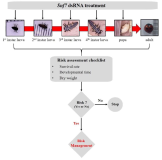
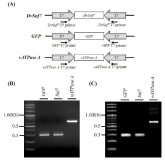
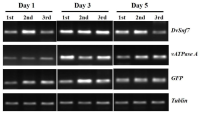
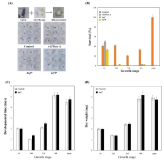
_학술지_디자인_시안_koar_top_300x55.png)
